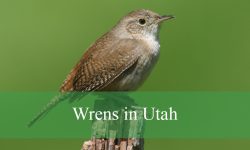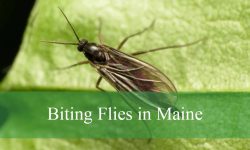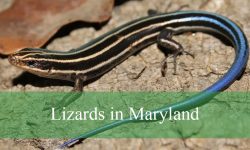Mississippi’s diverse forests, swamps, and backyards provide an excellent home for a wide variety of woodpeckers. These fascinating birds can be found year-round across the state, from the smallest Downy Woodpecker to the massive Pileated Woodpecker. Each species has its own unique markings, behaviors, and preferred habitats.
Birdwatchers in Mississippi have the chance to encounter both common residents and rare species. While the Red-bellied and Hairy Woodpeckers are frequently seen, the endangered Red-cockaded Woodpecker adds special significance to conservation efforts. Even the legendary Ivory-billed Woodpecker has historical roots in the state’s deep forests and swamps.
In this guide, we’ll explore all 9 types of woodpeckers in Mississippi with detailed descriptions, identification tips, and insights into their habits.
Different Woodpeckers Found in Mississippi
Red-bellied Woodpecker (Melanerpes carolinus)
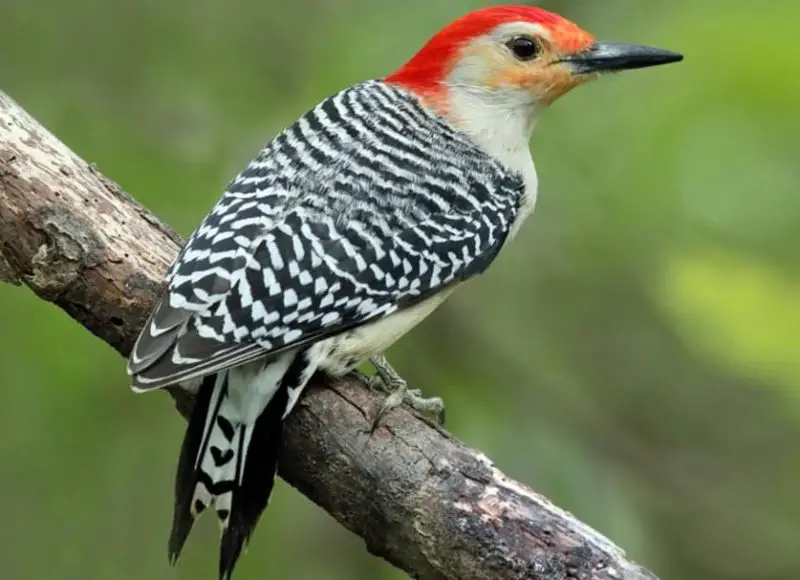
The Red-bellied Woodpecker is one of the most common woodpeckers in Mississippi and is often spotted in woodlands, parks, and backyards. Despite its name, the red on its belly is faint and not easily visible, while its most striking feature is the bright red cap that extends from its beak to the nape of its neck in males and partially in females. Its back and wings are patterned with black and white bars, giving it a zebra-like appearance.
This species measures about 9–10.5 inches long with a wingspan of 13–17 inches. Its call is a rolling “churr” or “kwirr,” which is frequently heard echoing through wooded areas. They are often seen climbing tree trunks with ease, using their stiff tail feathers for support while searching for insects.
Red-bellied Woodpeckers are opportunistic feeders, consuming insects, nuts, seeds, and fruits. They are also known to visit backyard feeders, especially if peanuts or suet are provided. During summer, they help control insect populations, while in winter, they rely more heavily on acorns and berries.
They nest in tree cavities that they excavate themselves, usually in dead or decaying trees. Both parents take part in raising the young, and these woodpeckers are known to be territorial during the breeding season. They are year-round residents in Mississippi, making them a familiar sight throughout the year.
Downy Woodpecker (Dryobates pubescens)
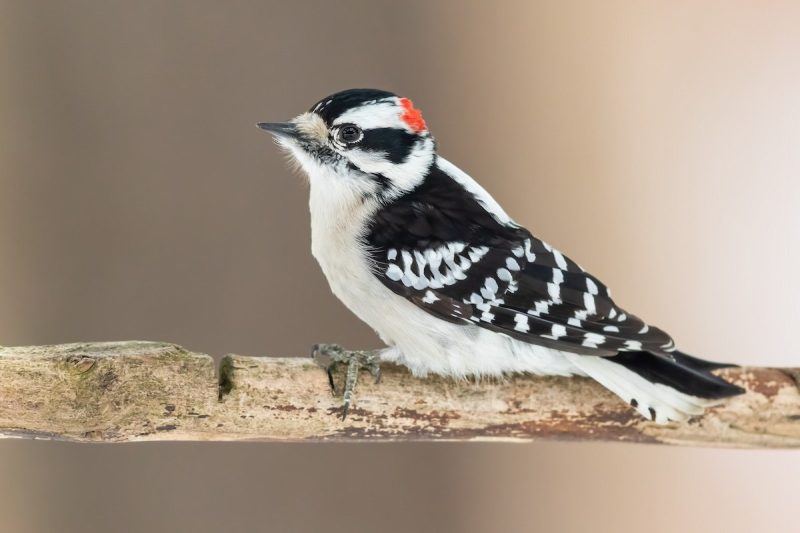
The Downy Woodpecker is the smallest woodpecker in Mississippi, measuring just 6–6.5 inches long with a wingspan of 10–12 inches. It has a compact body, white belly, black wings with white spots, and a distinct white stripe down its back. Males are identified by a small red patch on the back of the head, while females lack this marking.
They are highly adaptable and can be found in forests, orchards, and residential areas. Their short bill is useful for pecking into small twigs and branches where they forage for beetles, caterpillars, ants, and other insects. Unlike larger woodpeckers, Downy Woodpeckers are often seen clinging to thin stems and even feeding on weeds.
These birds produce a sharp “pik” call and a high-pitched whinnying sound during communication. They also drum rapidly on tree trunks as part of their territorial and courtship behavior. Because of their small size, their drumming sounds much lighter compared to larger species.
Downy Woodpeckers nest in dead trees or branches, where they excavate small cavities. They frequently visit backyard feeders, especially suet, and are among the most likely woodpeckers to appear in suburban gardens in Mississippi. Their year-round presence makes them easy to observe across the state.
Hairy Woodpecker (Dryobates villosus)
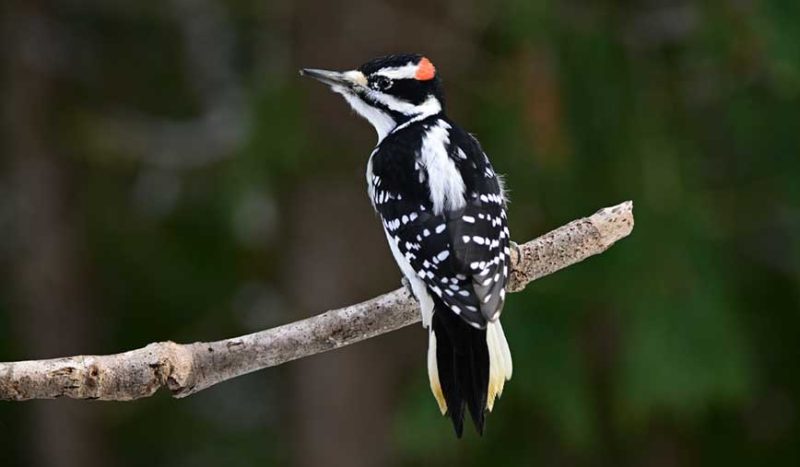
The Hairy Woodpecker looks very similar to the Downy Woodpecker but is noticeably larger, measuring 9–10 inches in length with a wingspan of 15–16 inches. It has the same black-and-white pattern with a white stripe down its back and a small red patch on males. The easiest way to tell them apart from Downy Woodpeckers is their longer, chisel-like bill.
They are strong foragers and are often seen hammering into tree bark to extract insects such as beetle larvae, ants, and caterpillars. They also feed on seeds and berries, especially during the winter months. Their drumming is louder and more powerful than the Downy Woodpecker’s, echoing across forests.
Hairy Woodpeckers prefer mature forests and wooded areas but will also visit suburban yards if large trees are present. They are less likely than Downy Woodpeckers to feed on small stems, sticking instead to thick trunks and branches. Their sharp “peek” call is another useful way to identify them.
Nesting takes place in excavated cavities within dead trees or limbs. Both sexes share the duty of incubating eggs and feeding the chicks. They are year-round residents in Mississippi, contributing to natural pest control in forest ecosystems.
Northern Flicker (Colaptes auratus)
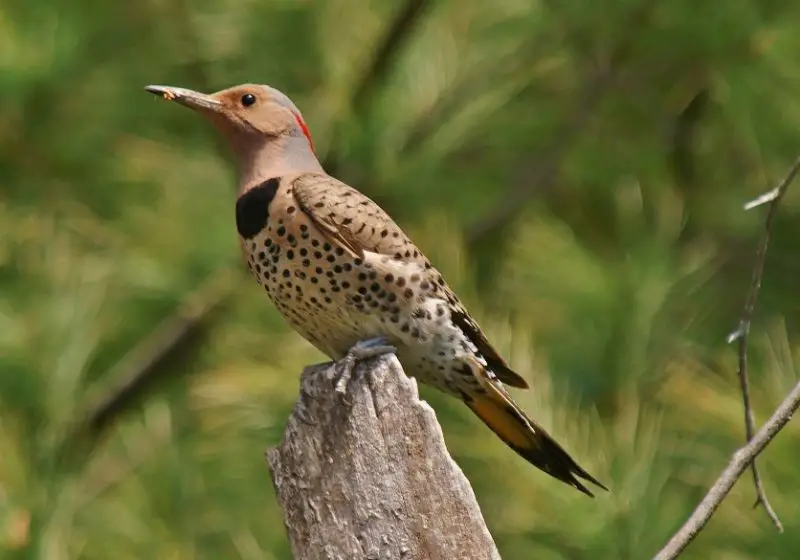
The Northern Flicker is a large, striking woodpecker that can reach 11–14 inches long with a wingspan of 17–21 inches. Unlike most woodpeckers, it often forages on the ground, where it feeds heavily on ants and beetles. In Mississippi, the “Yellow-shafted” variety is common, easily recognized by its golden-yellow underwings and tail feathers.
Its plumage is brown with black barring on the back and spots on the belly, giving it excellent camouflage in woodland environments. Males have a black mustache-like stripe along the cheek, which females lack. When in flight, the bright yellow flashes on the wings and tail make it unmistakable.
The Northern Flicker has a loud “wick-a-wick-a-wick” call, along with a piercing “kleer” note. It also drums on trees and even metal surfaces to establish territory. Its behavior of feeding on the ground makes it unique among woodpeckers, and it is often seen hopping across lawns in search of ants.
They nest in tree cavities and occasionally in fence posts or utility poles. Both parents care for the young. While some Northern Flickers migrate, many remain in Mississippi throughout the year, especially in wooded areas near open fields. Their presence adds a lively, colorful aspect to local birdwatching.
Pileated Woodpecker (Dryocopus pileatus)
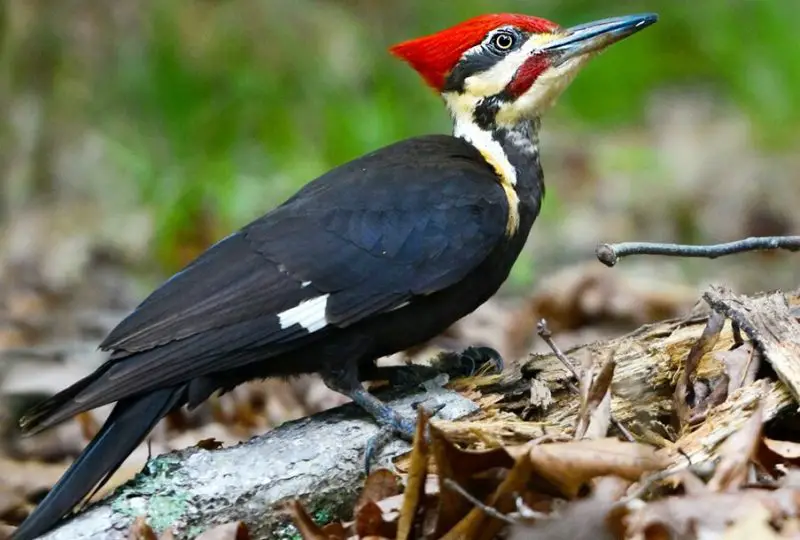
The Pileated Woodpecker is the largest woodpecker in Mississippi, measuring 16–19 inches in length with an impressive wingspan of 26–30 inches. It is easily recognized by its bold black body, white wing patches, and striking red crest. Its loud, resonant call and powerful drumming can be heard from long distances.
This woodpecker is famous for creating large rectangular holes in trees while searching for carpenter ants and beetle larvae. These excavations are so big that they can provide nesting sites for other birds and small mammals after the woodpecker moves on. Their feeding habits play a crucial role in forest ecology.
Pileated Woodpeckers prefer mature forests with tall trees, but they can also be found in wooded suburbs and parks. They are less common than smaller woodpeckers but are unforgettable once spotted due to their size and dramatic appearance. Their undulating flight and large wing patches make them stand out when flying.
Breeding pairs stay together year-round and defend large territories. They excavate deep nesting cavities in dead or dying trees, which they use for raising their chicks. In Mississippi, they are permanent residents and are among the most exciting woodpeckers to encounter in the wild.
Yellow-bellied Sapsucker (Sphyrapicus varius)
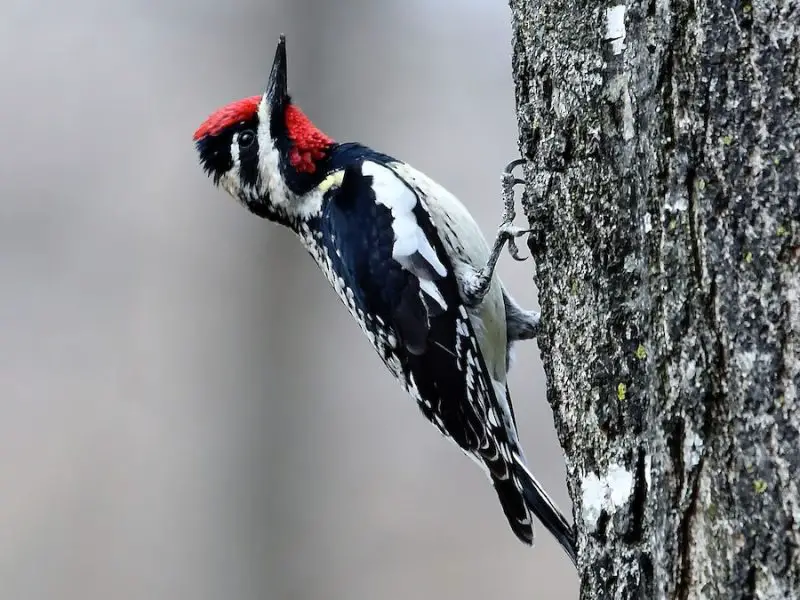
The Yellow-bellied Sapsucker is a medium-sized woodpecker, about 7–8.5 inches long with a wingspan of 13–16 inches. It has a mottled black-and-white body, with a distinctive red forehead in both sexes. Males also have a red throat patch, while females have a white throat. Its pale yellowish belly gives the species its name.
This woodpecker is known for drilling neat rows of small holes, called sap wells, in tree bark. They feed on the sap that flows from these holes, as well as insects attracted to the sap. Their foraging habits can sometimes damage trees, but they also benefit other birds that feed from the same sap wells.
Yellow-bellied Sapsuckers are migratory in Mississippi, typically seen during fall, winter, and early spring. They prefer forests, orchards, and wooded yards, where they drill into a wide range of tree species including birch, maple, and hickory. Their irregular drumming pattern, slower and more uneven than other woodpeckers, helps with identification.
They excavate nesting cavities in trees, usually in aspen or birch in their northern breeding range. While they do not breed in Mississippi, their presence adds seasonal variety to the state’s woodpecker population. Birdwatchers often spot them clinging to tree trunks in winter months.
Red-headed Woodpecker (Melanerpes erythrocephalus)
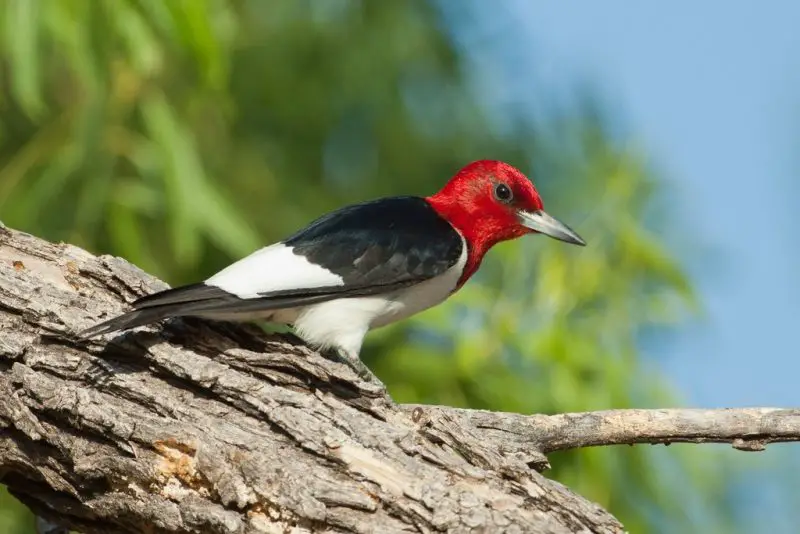
The Red-headed Woodpecker is one of the most visually striking woodpeckers in Mississippi. It has a completely red head, a black back, and crisp white underparts with large white wing patches. Adults measure 7.5–9.5 inches in length, with a wingspan of 16–17 inches. This bold coloration makes them easy to identify.
Unlike many woodpeckers, the Red-headed Woodpecker is an excellent flyer and often catches insects in mid-air, similar to a flycatcher. They also feed on acorns, nuts, fruits, and occasionally small vertebrates. They are known for storing food in tree crevices, even covering it with bark or wood chips for later use.
This species prefers open woodlands, groves, farmlands, and areas with scattered trees. They are less common in dense forests, and their population has declined due to habitat loss. In Mississippi, they are permanent residents, though their numbers may fluctuate depending on food availability.
Red-headed Woodpeckers nest in dead trees or snags, excavating cavities for raising their young. They are aggressive defenders of their nesting sites, often chasing away other birds. Their loud, harsh calls and bold flight patterns make them noticeable in the field.
Ivory-billed Woodpecker (Campephilus principalis)
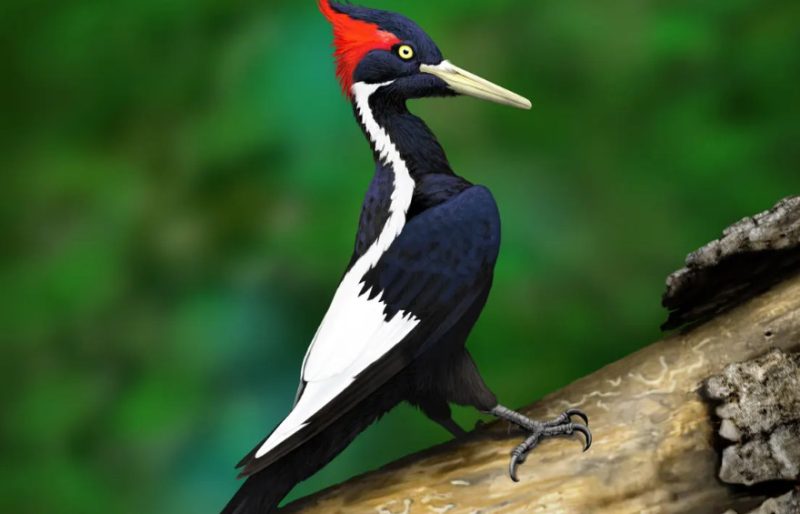
The Ivory-billed Woodpecker is one of the most legendary and controversial birds in North America. It is enormous, measuring 18–21 inches long with a wingspan of up to 30 inches, making it the second-largest woodpecker in the world. Its glossy black plumage, white wing patches, and large ivory-colored bill give it a striking appearance. Males also sport a red crest, while females have a black one.
Historically, this species lived in the swampy bottomland forests of Mississippi and other parts of the Southeast. It fed on beetle larvae found in dead trees, using its strong bill to strip bark. The Ivory-billed Woodpecker required vast tracts of untouched forest to survive, which contributed to its decline as logging destroyed its habitat.
By the mid-20th century, the species was believed extinct. Occasional sightings and unconfirmed reports in Louisiana, Arkansas, and possibly Mississippi have kept hope alive that small populations may still exist. However, no definitive evidence has confirmed its survival.
Today, the Ivory-billed Woodpecker is considered “possibly extinct” but still holds a place in Mississippi’s natural history. Birders continue to dream of rediscovering this iconic species in the deep swamps and remote forests where it once thrived.
Red-cockaded Woodpecker (Dryobates borealis)
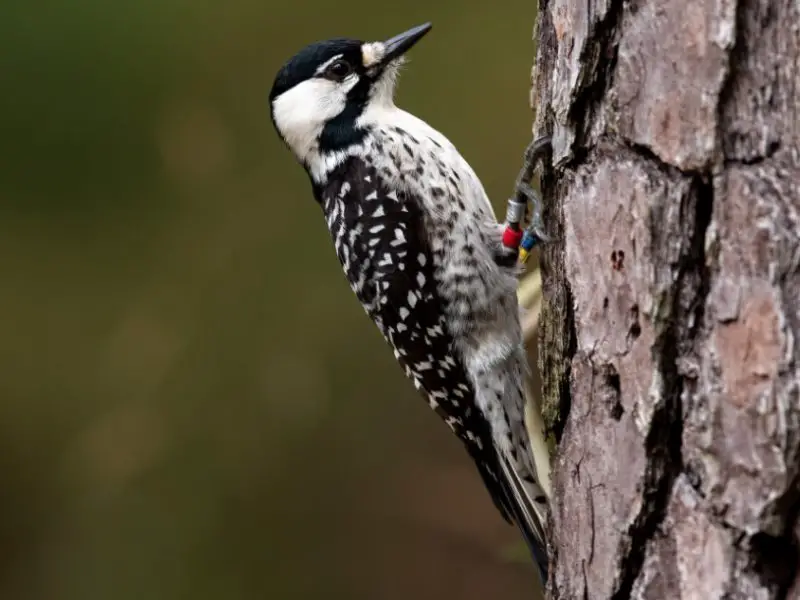
The Red-cockaded Woodpecker is a small, endangered species native to the Southeastern United States, including Mississippi. Measuring about 7.5–9 inches in length with a wingspan of 14 inches, it has a black-and-white barred back, white cheeks, and a black cap. Males have a tiny red streak, or “cockade,” on the side of the head, though it is rarely visible.
Unlike most woodpeckers, this species prefers living in mature pine forests, particularly longleaf pine ecosystems. They excavate nesting cavities in living pine trees, a process that can take several years. These trees often have red heart fungus, which softens the wood and makes excavation easier.
Red-cockaded Woodpeckers live in cooperative family groups, with offspring from previous years helping raise new chicks. They feed on insects, especially ants, beetles, and spiders, often gleaned from pine bark. Their dependence on old-growth pine forests has made them highly vulnerable to habitat destruction.
In Mississippi, conservation efforts focus on preserving pine habitats and creating artificial cavities to support this species. They are considered a rare but important part of the state’s bird diversity. Protecting them also helps preserve the pine forest ecosystems that support many other species.
Best Time and Place to See Woodpeckers in Mississippi
Mississippi is an excellent state for observing woodpeckers thanks to its mix of hardwood forests, pine stands, swamps, and suburban landscapes. Since most of the nine species found here are year-round residents, birders can enjoy spotting them in every season. However, spring and early summer are especially rewarding, as woodpeckers are more vocal and active during the breeding season. Their drumming and calls carry through the woods, making it easier to locate them.
One of the best places to see woodpeckers in Mississippi is in mature pine forests and bottomland hardwood forests, particularly for species like the Pileated Woodpecker and the endangered Red-cockaded Woodpecker. State parks such as Tishomingo State Park, Roosevelt State Park, and Bienville National Forest are excellent birdwatching destinations. Swampy areas and nature reserves also provide habitat for species like the Northern Flicker and the elusive Ivory-billed Woodpecker, though the latter remains unconfirmed.
Backyards, orchards, and suburban neighborhoods with large trees are also prime spots for observing more common species like the Red-bellied Woodpecker, Downy Woodpecker, and Hairy Woodpecker. Adding suet, peanuts, or sunflower seeds to feeders can attract these birds year-round. In winter, migratory species such as the Yellow-bellied Sapsucker join local residents, increasing diversity.
For the best experience, go birdwatching in the early morning hours, when woodpeckers are most active and vocal. Bring binoculars and listen closely for drumming or high-pitched calls echoing through the trees. With patience, you can encounter several different species in a single outing.
FAQs about Woodpeckers in Mississippi
What is the largest woodpecker in Mississippi?
The Pileated Woodpecker is the largest living woodpecker in Mississippi, reaching up to 19 inches long with a wingspan of nearly 30 inches. Historically, the Ivory-billed Woodpecker was even larger, but it is now considered possibly extinct.
Are woodpeckers in Mississippi migratory?
Most species, such as the Red-bellied, Downy, and Pileated Woodpeckers, are permanent residents. However, the Yellow-bellied Sapsucker is a migratory species that visits Mississippi in fall and winter before returning north to breed.
Which woodpecker species are endangered in Mississippi?
The Red-cockaded Woodpecker is federally listed as endangered due to the loss of old-growth pine forests. Conservation projects in Mississippi focus on protecting pine habitats and creating artificial nesting cavities to support this species.
Can woodpeckers damage trees in Mississippi?
Most woodpecker activity is harmless and even beneficial, as they help control insect populations. However, Yellow-bellied Sapsuckers sometimes drill numerous sap wells that can stress certain trees, especially young or ornamental ones.
Where is the best place to see rare woodpeckers in Mississippi?
To spot the Red-cockaded Woodpecker, visit longleaf pine forests managed for conservation, such as De Soto National Forest. For the legendary Ivory-billed Woodpecker, swampy bottomlands once provided habitat, though its continued existence is uncertain.


